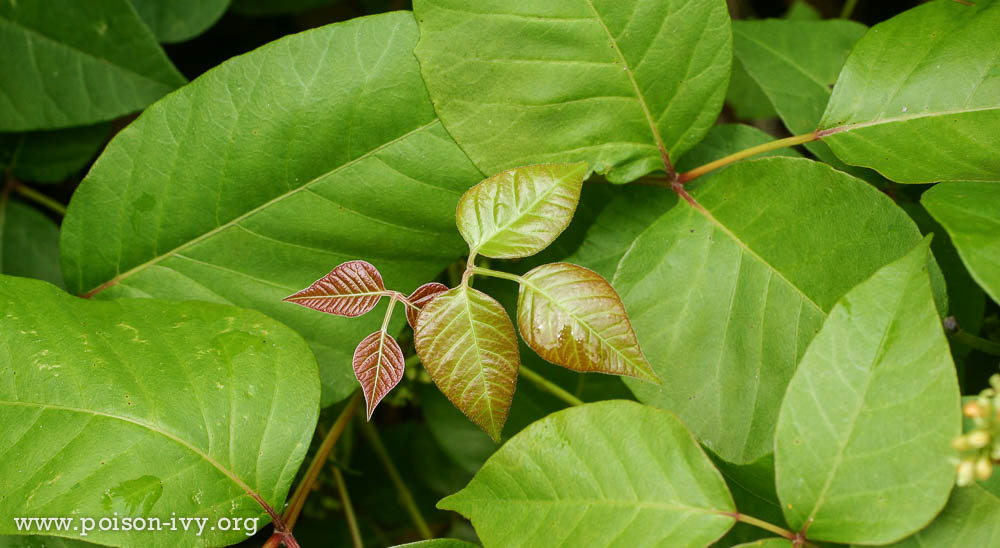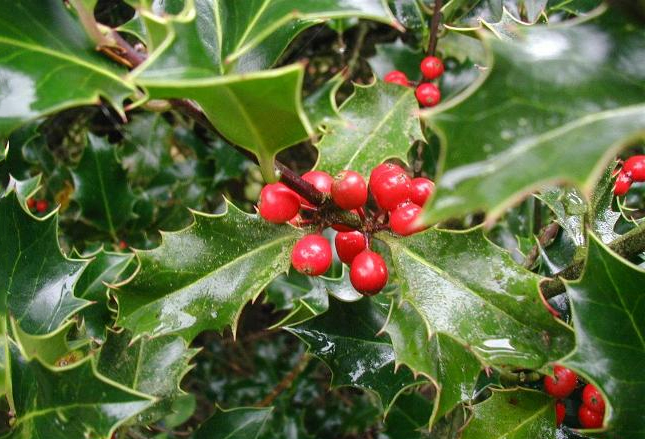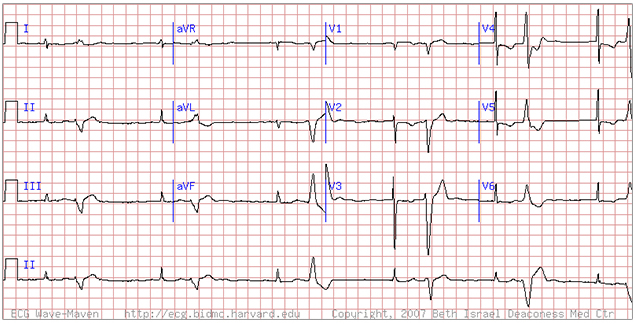10 Common Poison Plants to Kids – And Other Living Things
This beleaguered house plant may look like one of yours, it does mine and there are millions of them in households everywhere because of their interesting foliage and color; but, it is one of the seven most common poison plants for kids.
Ornamental Philodendron house plant
The National Poison data System (NPDS) kept by the American Association of Poison Control Centers’ (AAPCC) revealed to us that the parents of 46,376 children sought poison control help for plant exposures in the U.S. during 2013 and almost 2/3rds (63%) of them were under 6 years old!
That age group explores everywhere and nearly everything goes in their mouths!
10 Poison Plants for Kids
Luckily most things you frantically pull from your children’s mouths are benign and don’t amount to much; but, some do and these plants can be deadly. Of the thousands which were admitted to hospitals, three didn’t survive in 2013.
Philodendron
Do you recognize the name of the plant at the top? – Philodendron.
A crawling infant who chews on the leaves of this plant will present to the ER with
During hospitalization the esophagus can erode and
Oxalate crystals are found in the leaves of these plants which are tiny, spindle-shaped things that easily cut into tissue and cause mechanical irritation. Once in awhile airway edema and obstruction may be seen; and, if the crystals get into the eyes, they will cause pain, redness and swelling.
There are three other genera which cause the same poisoning as Philodendron; namely, Caladium (above left), Dieffenbachia, and Spathiphyllum.
Lime Juice, Turnips
A teen helping his dad harvest turnips or a flight attendant getting the juice of the plant on the right on her could both just as easily come into the ER with this same rash on their arm (left).
There are several plants which produce
Plants who do this contain photosensitizing chemicals known as furocoumarins. These molecules, when exposed to ultraviolet light, cause skin damage and the above mentioned rash.
Some of the common genera which have the ability to do this are: citrus (lime etc.), Ficus (Fig), Daucus (carrot), Cymopterus (parsley) and Pastinaca (parsnip) – and others.
Skin exposure to the chemical-containing part of one of these plants followed by ultraviolet light exposure can lead to the rash in about 24 hours on sun-exposed areas – i.e. harvesting turnips on a sunny day, spilling lime juice then sunbathing.)
Datura stramonium (jimson weed)
What do the seeds at the right and the plant at the left have to do with a teen admitted to the ER with confusion and agitation along with drifting in and out of consciousness? While intubating the doctor noticed brown particles between his teeth and the nurse took a bag containing seeds (shown) out of his pocket.
The poor fellow had chewed Datura stramonium seeds (jimson weed) in order to experience a “natural high” but instead merely induced an “anticholinergic delirium” on himself. Datura is still a popular drug of abuse among teens – and those that act like them. Some chew the seeds, others brew them in a tea along with the leaves.
Ingesting the seeds is more dangerous due to the longevity of the symptoms as they are absorbed over several hours. The medication Physostigmine may be helpful in reducing some of the anticholinergic symptoms but has side-effects of its own.
Two other genera contain the same anticholinergic belladonna alkaloids – Atropa and Brugmansia. The trumpet-shaped flower is common to plants in the Datura genus whose common name is “angel’s trumpet.”
Nerium oleander (common oleander)
There are a few things which people post on the internet that should, in my opinion, be a jailable offence and has nothing to do with porn.
As stupid as it sounds, the known poisonous plant Oleander has been given on the internet as a “remedy” for diabetes. It’s only a “remedy” if you count death as a remedy.
Desperate people tired of dealing with the difficulties of the REAL treatment brew a tea of the leaves hoping for a miracle “that their doctor doesn’t want them to know” and end up (if they’re lucky) in the ER with altered mental status and low body temperature, heart rate, respiratory rate and blood pressure!
The ECG (right) shows the heart beat with what we call bidirectional tachycardia characteristic of a cardiac glycoside poisoning.
Oleander contains cardiac glycosides similar to those found in digitalis and poisoning has been seen from inhalation of oleander smoke, use of oleander twigs to roast marshmallows and (believe it or not) ingestion of water into which oleander flowers were placed.
Oleander is not alone in producing cardiac glycosides. The Digitalis species (foxglove), Convallaria majalis (lily-of-the-valley), and Thevetia peruviana (yellow oleander), among others all do the same thing.
Poisoning with any of these, especially in children, nearly always results in a stay in intensive (or coronary) care and is substantially difficult to treat with antidigoxin antibodies.
Poison hemlock (Conium maculatum)
Excited to have some time off to be with his four-year-old son an “outdoors” type father took his son on a day-trip to the mountains in order to sample the things offered there – including foraging on some wild carrots like he had done as a child with his father.
It wasn’t long until the boy complained of feeling sick to his stomach and the dad didn’t feel too well himself. When the child vomited, became lethargic then unresponsive they dashed to the nearest emergency room 25 miles away.
By then the boy was stuporous but did pull back when pinched (responsive to painful stimuli). His blood pressure was hypertensive, his heart rate was up (tachycardia), he had small pupils with disconjugate gaze and patches of his skin looked “jumpy” (muscle fasciculations) and sweaty.
His dad did have the foresight to bring in a sample of the “wild carrots” they had both eaten which turned out to be the plant in the middle of the photo on the left, poison hemlock (Conium maculatum). Wild Carrot (Daucus carota) is the plant on the left and the plant on the right is another poison plant cowbane or water hemlock (Cicuta virosa) – all look-alikes, eh?
Poison hemlock contains nicotinic alkaloids (eg, coniine), which cause a nicotinic cluster of symptoms we call a toxidrome in medicine. The Cicuta plant’s toxicity prominently features seizures.
Untreated the early symptoms of tachycardia turns to bradycardia (slow heart rate), contracted pupils turn to dilated (widened) and muscle fasciculations turn to paralysis.
Toxicodendron Poisoning
Frankly I can diagnose the rash on the left a lot more readily than the plant on the right; despite all my boy scout training about “LEAVES OF THREE LET IT BE!“
Sometimes these flippin’ plants have rounded, almond-like shapes, sometimes jagged edges. Sometimes they’ve got red bark and red edges, sometimes not. Sometimes they’re climbing up buildings or dropping down from trees or a grab-you-as-you-go-by bush or with leaves as big as a dollar bill or with leaves that are thickened and curled. But ALWAYS with “leaves of three.”
YOU may know these plants under the genus Rhus but now their called “Toxicodendron.” WE used to call the “poison” the “Rhus Antigen” back in med school – apparently because we didn’t know any better – but now we know that it’s the oil urushiol which is capable of sensitizing 90 out of a hundred of us should we roll around in the stuff!
The first time we got into it the rash might take longer to appear and be milder; but, after that, it’s one or two days and much more aggressive and hard to treat. There are several different types of Toxicodendron plants in US forests: western (T rydbergii) and eastern (T radicans) poison ivy; poison oak (T diversilobum) and poison sumac (T vernix).
It’s time for us all to dust off our boy scout training and remember “cluster of three leaves on one twig, let it be” – except for sumac which usually has 7-13 leaves.
Castor Beans (Ricinus communis)
I have a clear memory of castor bean plants being planted around our childhood home, and even playing with the multi-textured/colored beans. However, I DON’T have any memory of ever being warned that they were poisonous nor trying to eat one (they look too much like the bugs we found).
My parents have an all too CLEAR recollection of castor oil being used on them for almost every ailment – dad say’s it was a “punishment remedy.” However, they don’t have any recollection of either planting them (I had asked them why they planted them); or, like me, any understanding that they were one of the poison plants.
BUT THEY ARE, poisonous that is. In fact they may just contain the most deadly poison of anything listed in this article! Fortunately, their shell in the most part is so solid that it (maybe but don’t bank on it) protects humans from the poison inside (ricin) – unless chewed.
The internet, yet again, has a bunch of crap mingled in which claims it’s another “secret” that “they don’t want you to know” and it’s great for repelling moles – it’s NOT. No effect whatsoever.
Castor oil is made from the beans but the distilling/purification process renders the ricin inactive (I’m sure an unwittingly lucky circumstance.) It tastes terrible and it VERY EFFECTIVE at weeding out malingering children who don’t want to go to school; but, the only real medicinal effect it has is lubricating the bowels.
The internet also reveals reports of patients who’ve survived a “mild” case of poisoning from ingesting only ONE bean; and, there are upwards of several hundred cases of ingestion in the US each year but death is rarely reported.
What’s the big deal? Well, unless you’ve forgotten, terrorists use this stuff as a weapon of mass destruction – ingested, inhaled or injected. It is a toxalbumin which interferes with ribosomal function – and every cell runs on ribosomes. One of the most toxic substance known.
It’s not unusual for poisoned individuals not to be able to tell what they’ve ingested due to their inability to breath and respiratory distress (and, of course, the ventilator tube in their trachea) – for weeks! There is potentially fatal gastroenteritis, neurological and opthalmological lesions; which, even may be delayed.
There is no specific treatment and symptomatic management to reduce the load of the toxin needs to be initiated quickly and early when a case of poisoning is suspected so that serious complications will be avoided.
Abrus precatorius (jequirity pea or rosary pea; shown) contains a similar toxalbumin in its red-and-black seeds; which, used in jewelry may result in pediatric exploratory ingestions.
Ilex (Holly)
Still very vivid is my memory of pulling night duty in the ER during my residency when one of our chief petty officers (US Navy) had a birthday party for his 5-year-old son in the park near the base.
It lasted into the dark – the parents were having such fun – and broke up when one of the kids started crying.
Our small ER had kids everywhere (well at least four) howling with stomach pains on gurneys up and down the hall. Unwatched (for just a moment) they had all eaten the pretty berries on the plants and were not noticed until the red stain around their mouths gave them away.
I remember also that none of the parents were at all happy with me for not having a “shot or something” that could either “cure the poison” or “fix the vomiting and pain.” And, perhaps, my not totally politically correct quip about “pain is natures way of telling us to ‘don’t do that’” might not have seemed as humorous to them as I intended. There is no treatment except “supportive.”
Nor were they happy with me when, after they were stable, I sent them home with instructions to return if there were any signs of dehydration or non-improvement. [Not to mention the diarrhea which was likely to begin after they got home.]
I remember too the “sling” that was threatened to be placed on a particular part of my anatomy by one of the 10 parents “if anything happens to the kids.” – which, thankfully it didn’t.
And lastly I remember that, because he was a chief and therefore had actual power over how things were run (unlike us physicians), within a week nearly the whole park was torn up eradicating the “terrible plants” – there are over 300 species of the things after all.
Aconitum (monkshood, aconite, wolfsbane)
If you grind up and drink 5 ounces of the roots of this plant on the right…
you get an ECG that looks like this on the left.
Aconitum or wolfsbane is a cardio-active drug whose toxicity produces atrial fibrillation with ventricular bigeminy along with a trip to the ER, low blood pressure and bradycardia.
The constellation of symptoms in this toxidrome is know as “Sodium ion channel activation” which we’ve learned is a mechanism integral to producing and controlling the beating of the heart.
Unlike digitalis toxicity (mentioned above), poisoning by these plants cannot be treated by antidigoxin antibodies so all we can do it support the patient through whatever effects he endures.
Wolfsbane is in the genus Aconitum along with monkshood and aconite and features helmet-shaped flowers. Toxicity from its plant products not only causes heart but neurologic effects as well; such as paresthesias (numbness).
Sodium ion channel activation is caused by plants in other genera also – Veratrum (false hellebore; left image), Rhododendron (rhododendron, azalea; right image), and Zigadenus (death camas), among others.
Euphorbia pulcherrima, (poinsettia)
Despite a long-standing reputation for being highly toxic, if you call poison control these days you’ll be told that ingestions of these plants are largely benign – aside from occasional mucous membrane irritation and gastrointestinal distress.
The reputation that it could cause death came from a single case report of a death back in 1919; which was thought to be due to the plant, but has not panned out over the years.
Phytolacca americana, (pokeweed)
Poke weed causes gastrointestinal upset and even hemorrhaging with possible death; but, it just looks so darn pretty that southerners figured there just had to be a way they could eat it.
If a child eats it, it will irritate their GI tract causing nausea, vomiting and diarrhea along with a strange lymphocytosis on their blood count to confuse doctors. Once in awhile they will get hemorrhagic gastritis, hypotension and bradycardia so death is a possibility.
The blood changes are due to “pokeweed mitogen” a component which increases lymphocytes and lasts for up to ten days after the exposure.
In adults, southerners have found that parboiling either the leaves or berries reduces the toxicity burden such that they can make “poke sallet” (poke salad) which has become a traditional southern food.
Advertisement by Google
(sorry, only few pages have ads)





















